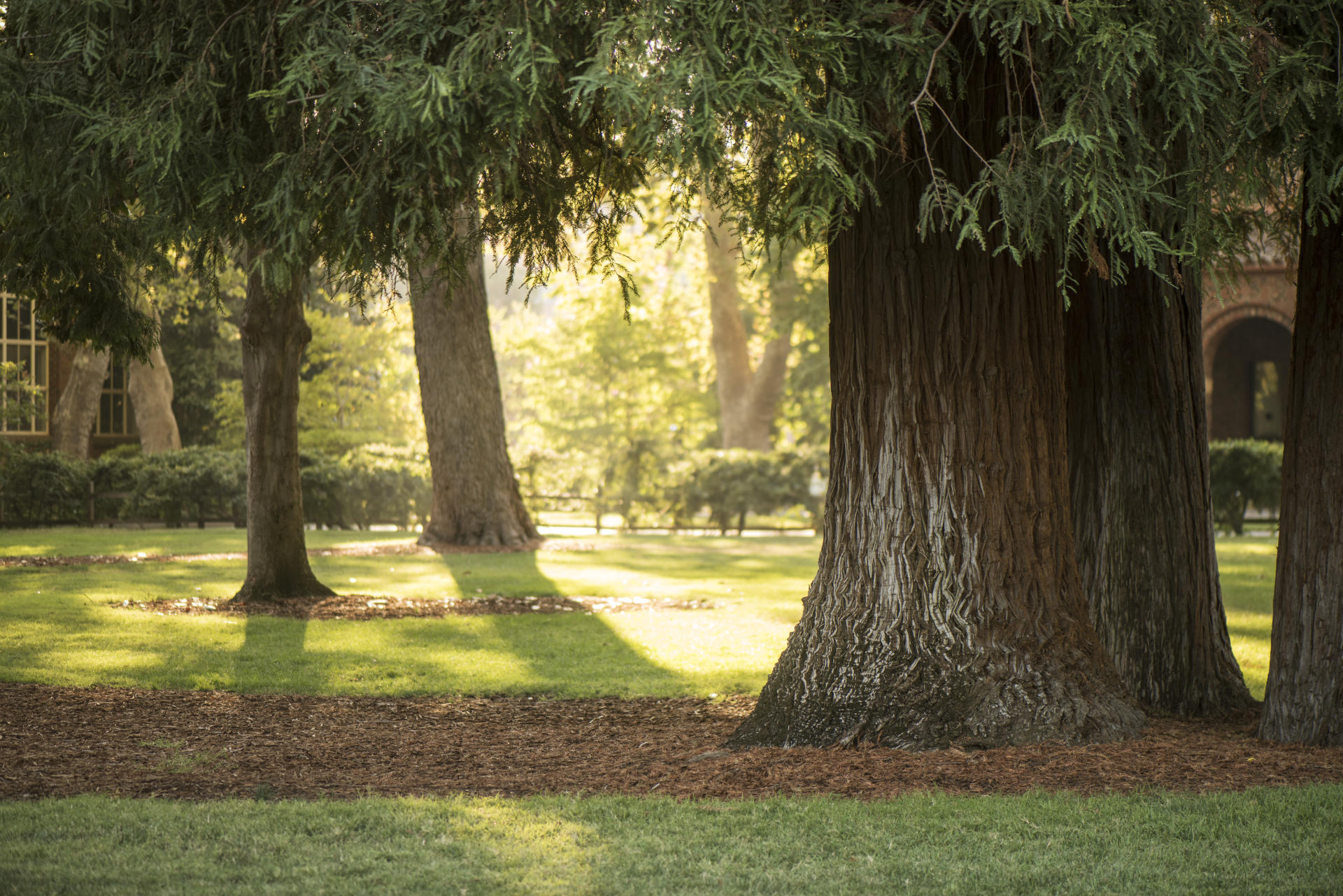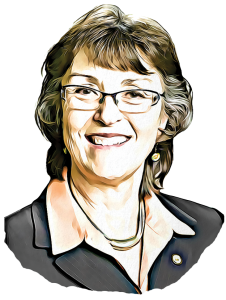From the President: Striding Toward a Sustainable Chico

The sun sets behind the trees on the Kendall Hall lawn on Thursday, August 4, 2016 in Chico, Calif. (Jason Halley/University Photographer)
I have entertainer and educator Jimmy Kimmel to thank for giving me the simplest way to explain climate change. Earlier this month, I learned the late-night TV host enlisted the help of two children, 8-year-old Apollo and 10-year-old Kaitlynn, to describe the phenomenon to President Donald Trump.
Kaitlynn introduces the lesson by saying, “It’s just science, like gravity. You don’t get mad about gravity, right?” Apollo pointed out that weather is what we experience each day, but climate change is something that happens on earth over time. But, the young educators explained, our spike in greenhouse gases is hastening the problem, and the resulting higher temperatures, melting ice, extreme weather, rising sea levels, and drought are “creating a pretty tough place” for kids like them to live.
Their message was simple yet strong, a plea to adults to leave Earth healthier than it is today. I hope we all answer their refrain.
Frankly, it is time for our nation’s leaders to pass legislation that will aggressively and swiftly reduce carbon dioxide and other greenhouse gas emissions from the atmosphere. Climate action is a global effort. But it’s also a local one and one that we at Chico State are eager to be part of.
The University has been a trailblazer in climate action since becoming a founding signatory to the American College & University Presidents’ Climate Commitment (ACUPCC) in 2006, and we deepened this pledge when we signed on to the Presidents’ Climate Leadership Commitment in 2015. The work we have done is commendable and important in reducing our campus’s climate impact.
However, the progress on campus to date falls short of where we hoped to be by now. And so last fall we reorganized our administrative structure as it relates to sustainability, reconvening the dormant Campus Sustainability Committee, devoting resources to the Regenerative Agriculture Initiative, and reassigning the sustainability programs manager role into Facilities Management and Services. Entities across campus and across disciplines are working together to reenergize our efforts, and I’m confident the recent changes will strengthen our sustainability practices and progress. The work doesn’t stop there. We will continue to ask for your help in determining short-term and long-term goals that will aid our push to be climate responsible.

I was encouraged to hear that dozens of students, faculty, and staff attended an open forum by the Campus Sustainability Committee earlier this month. Working in small groups, individuals shared concerns, ideas, and suggestions on a variety of sustainability topics. That information will be valuable to University strategic planning discussions also taking place this spring. In fact, the Strategic Planning Steering Committee will be conducting campus and community engagement sessions February 13 and 14, and I hope you’ll attend to share your ideas on how sustainability is part of the University’s mission and vision. It is abundantly clear that our commitment to significantly reduce energy consumption and greenhouse gas emissions will remain a robust strategic priority now and in the future.
We are well on our way toward deepening our role as the intellectual, innovative, and cultural partner of the North State and beyond. As part of that goal is our responsibility to help communities off campus develop resilient, low carbon, eco-friendly economies designed to preserve the environment, encourage social justice and equity, and enhance health and well-being for all living things. Therefore, it’s critical we find ways to strengthen our sustainability partnerships and build new ones with the region through scholarship, teaching, and service.
As an institution of higher learning, we must utilize scientific knowledge to make changes to our institutional behaviors and encourage government agencies and industry partners to do the same. We cannot hope that someone else takes action around regenerative and sustainable practices. It is time for our collective attention and action to accomplish much more at Chico State than we have since signing the ACUPCC 13 years ago.
So, I ask you: What is your understanding of climate change and its destructive impacts on ecosystems and civilization? I decided that my own personal knowledge is not enough and that I need to understand it much more. I’ve started by reading a wonderful book edited by Paul Hawken, Drawdown, the Most Comprehensive Plan Ever Proposed to Reverse Global Warming. The climate science and solutions shared in this book are helpful to scientists, policy-makers, and concerned citizens alike. If you haven’t read it, I hope you will.
I’m also committed to educating myself within the circles of higher education sustainability. Each year, Second Nature and the Intentional Endowments Network sponsor the Higher Education Climate Leadership Summit with the purpose of convening leaders in higher education in an urgent response to climate reports, and to innovate, scale, and accelerate climate action on college campuses. This week, I am excited to join Cheri Chastain, our campus sustainability manager, at the 2019 summit in Tempe, Arizona. I am taking notes and will be sharing with campus what I learn.
We all have responsibility to live and work more sustainably. Looking forward to our 2030 goals, Chico State has about a decade to build a campus with resilient and sustainable systems and structures designed to reduce energy consumption, decrease carbon and other greenhouse gas emissions, and enhance community health and vitality.
Kaitlynn is right—it’s not hard, “it’s just science.” Together, we will.



